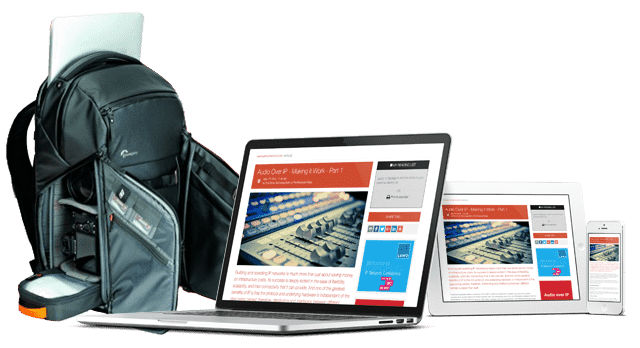A Practical Guide To RF In Broadcast: Part 2 - Bands, TX, RX & Radiation

This is the second of a multi-part series exploring the science and practical applications of RF technology in broadcast.
About 'A Practical Guide To RF In Broadcast'
A Practical Guide To RF In Broadcast is a Themed Content Collection that will publish during 2023. The complete series of twelve articles provides an extensive technical guide to RF technology within broadcast. It is a major work that will serve as a reference resource for professional broadcast engineers.
Broadcasting has encountered more technology change over the past thirty years than many of us care to think about. Analog has changed to digital delivery, SD has changed to HD and 4K, and sound is transitioning to deliver higher levels of immersive experience through object and surround sound. But the one consistent technology that has stood the test of time is RF.
RF differs from most other broadcast technology as it’s fundamentally analog. As the laws of physics haven’t changed in the past hundred years, then the underlying rules that govern all RF systems haven’t changed either. But what has changed is how we use RF in the context of modern broadcasting along with our understanding of how waves propagate through the universe.
Broadcasting has always driven technology to its limits, and this is certainly the case with RF. Morse devised the first channel coding system ninety years before Shannon formalized his achievements through information theory. And this in turn led to the development of the highly efficient coding systems that we use in modern broadcasting such as CODFM and 5G-NS.
Our RF understanding is sure to improve for as long as users continue to use mobile devices.
A Practical Guide To RF In Broadcast is a collection of twelve articles presented in four parts.
Each part tackles a different theme and there are three or more articles per part.
Details of all four parts can be found
HERE.
About Part 2. Bands, TX, RX & Radiation
Part 2 is a free PDF download which contains four articles:
Article 1 : RF Spectrum Bands
What they are used for and why, and RF propagation as it relates to frequency.
Article 2 : The Fundamentals of TX and RX
Transmitter and receiver design to block diagram levels.
Article 3 : A New Era In RF Analysis
Our partner DekTec discuss the features and benefits of their new portable USB3 RF probe the DTU-331.
Article 4 : The Principles Of RF Radiation
Choices of broadcast TV towers, antennas, feedline and filters, how to determine your needs.
Part of a series supported by
You might also like...
Live Sports Production: Camera To Truck
Much of the OB production infrastructure has moved to IP, but has the connectivity between the cameras and the OB or backhaul also migrated to IP?
Live Sports Production: Exploring The Evolving OB
The first of our three articles is focused on comparing what technology is required in OBs and other venue systems to support the various approaches to live sports production.
Cloud Compute Infrastructure At IBC 2025
In celebration of the 2025 IBC Show, this article focuses on the key theme of cloud compute infrastructure and what exhibitors at the show are doing in this key area of technological enablement.
Navigating Streaming Networks For Live Sports
With the relentless rise of consumers moving from OTA to live streaming of big-ticket sports, this series shares insight into what happens after content leaves production during a live stream. It is a subject broadcasters cannot afford to regard as…
Mobile Broadcasting Opportunities
Broadcasters have been catering for mobile viewing in various ways for many years but are now entering a new era as devices become more capable, with increasing scope for interactivity and greater immersiveness through Extended Reality (XR). But with connected…








